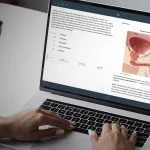Clinical rotations are a turning point in physician assistant (PA) school. After months of lectures, study guides, and exams, you're finally stepping into the real world of medicine. This phase of your training brings you face-to-face with patients, providers, and a wide range of specialties — helping you apply what you've learned and figure out what kind of PA you want to become.
Before you grab your white coat and stethoscope, it’s helpful to understand how rotations are structured, which specialties you’ll experience, and how to prepare for each one. Here’s what you can expect as you enter the clinical phase of your PA journey.
The 2 Phases of PA Education
Before you enter clinical rotations, you’ll complete the first part of your program known as the didactic phase. This classroom-based phase typically lasts about 12 months and is packed with lectures, labs, and foundational coursework in anatomy, physiology, pharmacology, and medical ethics. You’ll also build essential skills in patient communication, physical diagnosis, and clinical reasoning, preparing you for hands-on care.
Once you’ve successfully completed this phase, you’ll transition into the clinical phase of your education. This is where clinical rotations begin. Most PA programs follow a similar format, though the timeline and specific rotation offerings may vary. Over the next 12-15 months, you’ll rotate through various specialties, applying what you’ve learned while gaining real-world experience in a supervised setting.
Together, these 2 phases prepare you for the challenges of patient care and the responsibilities of working as a certified PA.
Clinical Rotation Logistics: What to Expect
Each clinical rotation brings new challenges and a new learning curve. While the specialties may vary, most programs follow a similar structure regarding timing, expectations, and assessments.
How Long Are PA Clinical Rotations?
Most clinical rotations last between 4 and 8 weeks, though the length can vary depending on your program and the specialty. Some high-volume or more complex rotations, such as internal medicine or surgery, may last longer, while others may be shorter or split into multiple segments.
Across all your rotations, you’ll complete 2,000 or more hours of supervised clinical practice, working alongside physicians, PAs, nurses, and other healthcare professionals. You’ll build your clinical reasoning, practice hands-on skills, and learn how to function as part of a care team while applying what you learned during the didactic phase.
Rotation lengths can differ depending on your school’s curriculum, so check with your program for specific timelines. Below are the most common rotation durations for each specialty.
- Family Medicine
- Pediatrics
- OB/GYN
- Emergency Medicine
- Psychiatry
- Dermatology
- Ambulatory Medicine
- Oncology
- Internal Medicine
- General Surgery
- Cardiology
- Orthopedic Surgery
- Neonatology
- Infectious Diseases
- Plastic Surgery
- Surgical ICU (SICU)
What to Expect from the Day-to-Day Rotation Experience
Rotations are where everything starts to feel real. From early-rise mornings to packed patient care days, each week brings new responsibilities, new challenges, and a lot of learning on the fly. Here’s what to expect:
- Early mornings and long days: Depending on your rotation, especially in surgery, you might start your day as early as 5 a.m. Most shifts range from 8 to 12 hours, and no 2 days look exactly the same.
- Hands-on patient care: You’ll take histories, perform physical exams, discuss differential diagnoses, help with management plans, and interpret diagnostic results — all under the direct supervision of your preceptor. Every clinical decision is made with oversight and support.
- Steep (but rewarding) learning curve: The first few weeks of each rotation can feel overwhelming. You’re adjusting to new workflows, environments, and expectations. However, things will click faster than you think. Be patient with yourself.
- Support from your preceptors: You’ll work closely with supervising clinicians, PAs, physicians, or nurse practitioners who will challenge you, guide you, and offer valuable feedback. Some may become mentors who support you beyond your rotation.
- Professional growth along the way: Beyond the clinical skills, rotations also help you grow in communication, professionalism, and adaptability. Some programs even incorporate career workshops, such as resume writing or interview prep, to help you prepare for what's next.
What Are End-of-Rotation Exams (EORs)?
At the end of each rotation, you’ll likely take an end-of-rotation exam (EOR). These exams test how well you’ve understood the core topics covered during your rotation and help you identify any gaps before moving on to the next one.
Some programs use standardized exams developed by the Physician Assistant Education Association (PAEA), while others may write and administer their own in-house exams. Either way, EORs are an important part of your academic progress.
Even though most students focus on the PANCE, it’s still worth using your QBank during clinicals to ace EORs. You can sort QBank questions by system or specialty, which makes it easier to review what you’ve been seeing in the clinic and prep for your EORs without starting from scratch. A few practice questions here and there can go a long way when balancing rotation hours and studying on the go.
About Core Clinical Rotations
Every PA student completes a series of required rotations in key medical specialties. These experiences are designed to give you a well-rounded clinical foundation and prepare you to care for patients across all stages of life. Whether or not you pursue one of these specialties long-term, the skills you gain in each will serve you no matter where your career leads.
What to Expect in Your Required Rotations
Each rotation offers a unique opportunity to apply your medical knowledge in real-world settings while learning directly from experienced providers. Rotation names and formats can vary slightly by program. For example, some programs may combine OB/GYN and women’s health or offer psychiatry as part of a broader behavioral health rotation. Check your program’s curriculum for the most accurate rotation list.
Core Rotations
These core rotations reflect the generalist training model of the PA profession. Graduating ready to practice in any specialty, these diverse experiences are essential for building a strong clinical foundation and opening the door to various career paths in the future.
About Elective Rotations
While required rotations give you a strong clinical foundation, elective rotations let you explore areas of personal interest or dive deeper into specialties you may want to pursue after graduation. Most PA programs allow 1-5 electives, giving you valuable flexibility to shape your education based on your goals.
Whether you're considering a competitive specialty, hoping to build more procedural experience, or simply want to try something new, electives are your chance to personalize your clinical journey.
Sample Elective Rotation Options
Each program offers a variety of electives. These rotations allow you to explore your interests while helping you develop specialized skills to improve your resume and future applications.
Elective availability can vary depending on your program and clinical site partnerships. Not all electives are guaranteed, so it’s a good idea to plan ahead and stay in close contact with your program coordinator when selecting your options.
Elective Rotations
Elective rotations can also be a great opportunity to network, secure mentorship, and even land a job offer. Choose electives that align with your goals, but don’t be afraid to challenge yourself with something unexpected. You might discover a passion you didn’t see coming.






